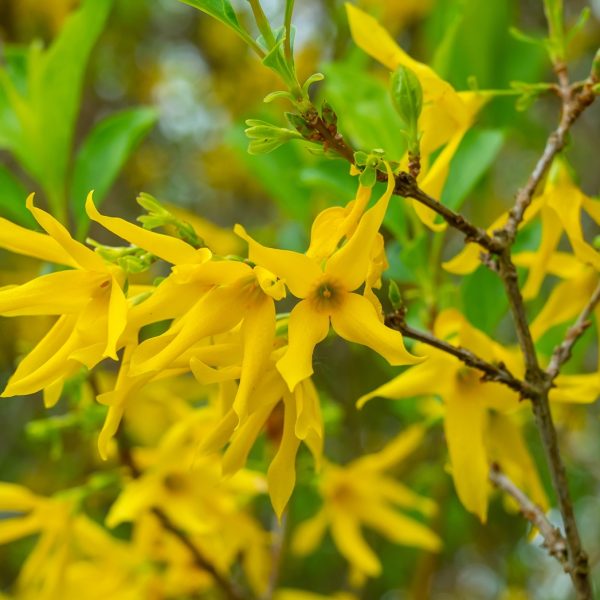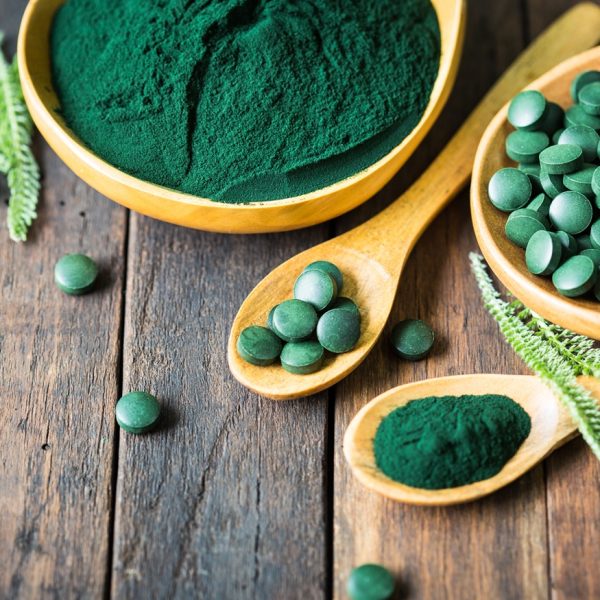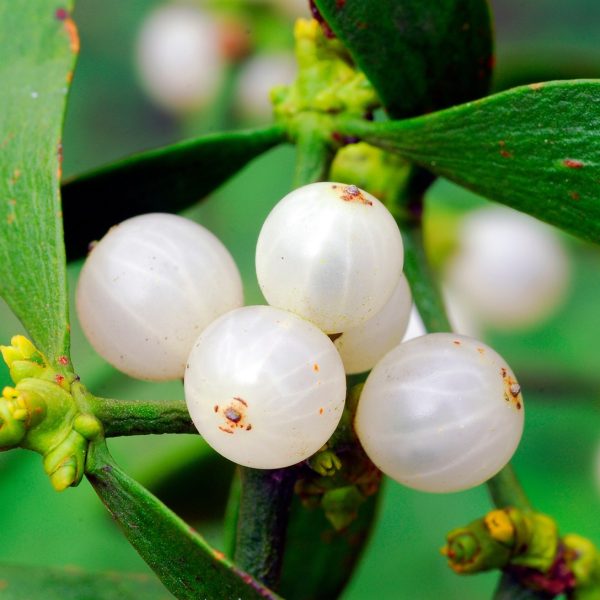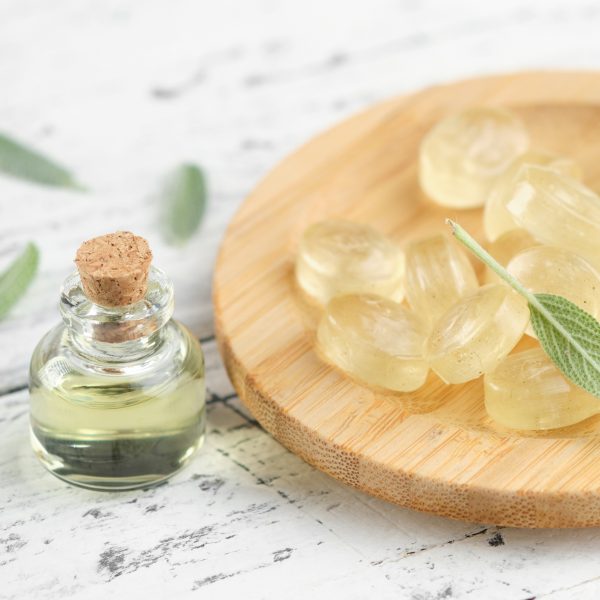Musculoskeletal health encompasses the joints, bones, muscles and connective tissues that govern movement. Discover illnesses of this system and remedial herbs and holistic solutions.
Musculoskeletal conditions are common, making it no surprise then that in 2021, 17% of the UK population of 16 years and above reported living with a long-term musculoskeletal condition (either arthritis or an ongoing issue with back or joints) (1). The good news is that there are many herbs and lifestyle measures that can help to improve and maintain musculoskeletal health.
Understanding musculoskeletal health

Musculoskeletal health refers to the function of the locomotor system of the body, composed of muscles, bones, joints, and their surrounding connective tissues. The connective tissues include cartilage, ligaments, tendons, and fascia.
Conditions of the musculoskeletal system are those which affect the following structures:
- Joints (osteoarthritis, rheumatoid arthritis, psoriatic arthritis, gout, spondyloarthritis)
- Bones (osteoporosis, osteopenia, traumatic fractures)
- Muscles (such as sarcopenia)
- Multiple body areas or systems (such as regional e.g. back and neck pain, or widespread, e.g. fibromyalgia, ankylosing spondylitis, pain conditions, inflammatory diseases such as connective tissue diseases and vasculitis with musculoskeletal manifestations, systemic lupus).
This is not an exhaustive list but shows a variety of conditions that can affect musculoskeletal health. Although broad ranging, the commonality between musculoskeletal conditions is that they tend to be characterised by pain and physical limitations, which can often affect daily activities and impair quality of life.
The duration of musculoskeletal conditions can range from a short-lived fracture, strain, or sprain, to long-term ailments, such as low back pain and osteoarthritis.
It is estimated that around 1.71 billion people worldwide live with musculoskeletal conditions, and high-income countries have the highest numbers of people affected (2). Low back pain is the leading cause of disability in 160 countries and is the biggest contributor to musculoskeletal conditions with 570 million cases worldwide (3). Osteoarthritis is thought to affect 528 million people, followed by fractures and broken bones as the third most common musculoskeletal health issue affecting 440 million people globally (3).
This article will explore how to take care of the musculoskeletal system to best maintain its healthy function, and how to manage common musculoskeletal health conditions, looking at herbs and holistic solutions that offer support.
How does musculoskeletal health work?
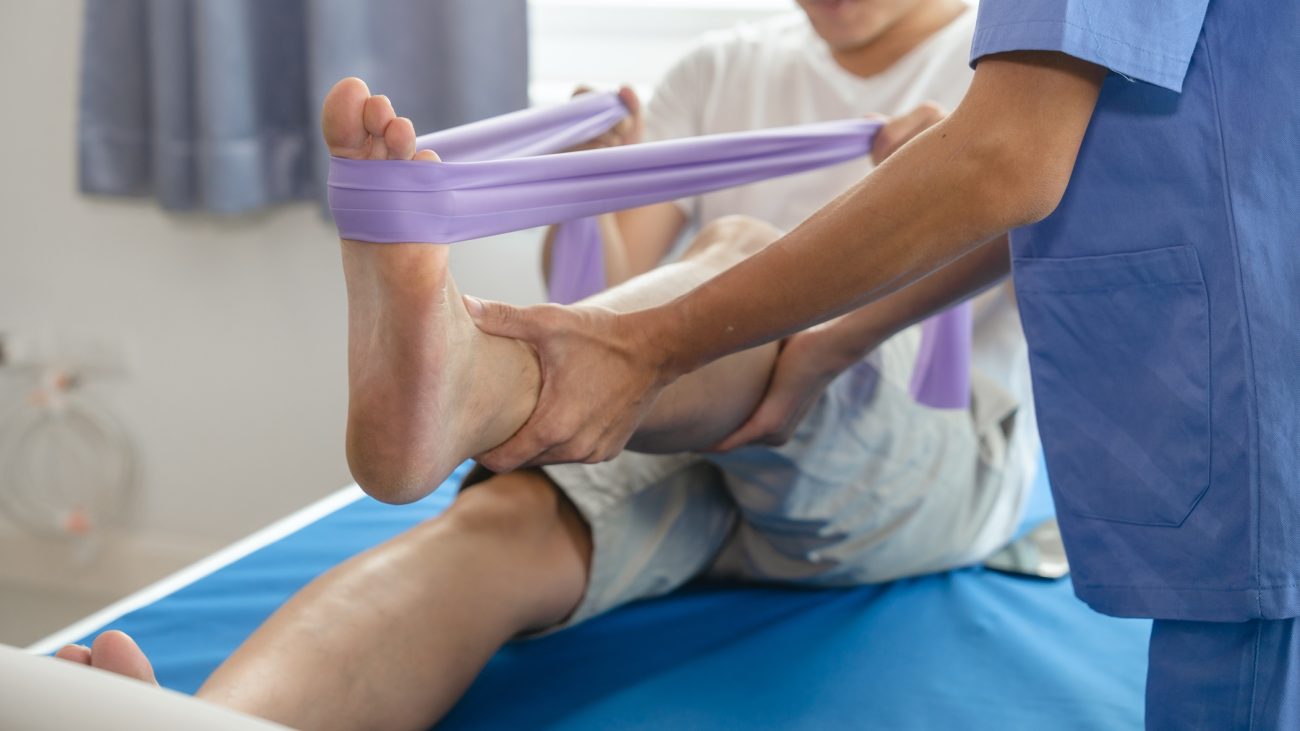
Biomechanics are an important factor in musculoskeletal health; this refers to changes in how the joints are loaded with weight. Biomechanical changes such as misalignments impact the health of joints over time, by creating additional force on joints and bones (especially on moving/diarthrodial joints), which eventually alters the physiology of the joint and can potentially lead to pathology (3).
An example is osteoarthritis, which tends to be referred to as a ‘wear and tear’ type degenerative arthritis. Structural misalignment may trigger the condition, initially manifesting as localised pain and swelling. Over time this can lead to a subsequent cascade of immune responses affecting behaviour of cartilage and bone producing cells in the local area. This prolonged inflammation can result in a breakdown of cartilage and produce changes in bone structure as the condition shifts from a biomechanical issue to active disease.
Other subtypes of arthritis include autoimmune types such as psoriatic, rheumatoid, and spondyloarthritis, and those which can arise as secondary causes, such as gout — a painful build-up of uric acid deposits in the joints — or infective arthritis (4). However, arthritic conditions are not mutually exclusive being solely structural ‘wear and tear’ or immune-based arthritis (3), they are often complex and multi-factorial, just as the support for them can be.
Rheumatoid arthritis is a chronic inflammatory autoimmune condition which can affect the whole body, particularly impacting synovial membranes of the joints such as in hands, feet, wrists, ankles and knees. Simply put, autoimmune reactions cause antibodies to affect joint tissues.
Other musculoskeletal health conditions include fibromyalgia, which is characterized by generalised muscular aches, with specific pain points throughout the body and associated fatigue.
Lower back pain is the most common type of musculoskeletal condition and may be linked to posture, weight, injury, osteoarthritis, wear and tear, and stress.
Understanding the root of good musculoskeletal health

Root causes of musculoskeletal health issues are varied depending on the specific conditions.
However, putting aside injuries (such as sprains, strains, and broken bones), musculoskeletal health conditions tend to involve common factors, including elements of inflammation, and can be triggered or exacerbated by lifestyle factors, such as movement habits, diet, activity levels, excess weight and stress. You can read our article on inflammation for further details on how to manage inflammation with diet and digestive support.
The root causes of osteoarthritis can be related to age, obesity, strain, trauma, joint congenital anomalies, joint deformities and other factors (5). Altered joint loading is often associated with obesity, malalignment, trauma, or joint instability (such as in the case of loose ligaments and/or weak muscles) and is a risk factor for joint degeneration (3).
Gout was termed a ‘rich man’s disease’, primarily seen in adult men and associated with affluence and consumption of meats, which are high in uric acid producing compounds (purines), and alcohol, which inhibits uric acid excretion by the kidneys. Around 90% of cases are classed as primary, and linked to lifestyle factors, whereas 10% of cases are secondary and linked to other disorders (6).
The root of rheumatoid arthritis seems to be linked to a combination of genetic predisposition, environmental factors, digestive issues including bowel permeability and small intestine bacterial overgrowth (SIBO) (6).
Conditions affecting bone density such as osteoporosis tend to be linked to calcium metabolism, demineralisation, and hormones.
Fibromyalgia is often linked to emotional factors and stress. Inflammatory conditions such as costochondritis can also be associated with high stress levels.
Sarcopenia (loss of muscle mass) is often seen in older age and can be related to natural tissue degeneration which occurs with ageing, combined with lack of use.
Signs and symptoms of musculoskeletal problems
- Pain
- Inflammation
- Redness or swelling around joints
- Stiffness
- Reduced mobility
Autoimmune based musculoskeletal conditions such as rheumatiod arthritis may include more systemic symptoms such as:
- Weight loss
- Fatigue
- Low-grade fever
- Weakness
Herbs to support musculoskeletal health
Herbs can be of great help in managing musculoskeletal conditions. The holistic approach to herbal medicine means that whilst the primary goal is never to simply provide symptomatic relief, this can be a useful aid to reduce pain, enabling more activity which will in turn improve most musculoskeletal conditions through building muscle strength, increasing mobility, improving circulation and, consequently, quality of life.
Alongside this, herbs can provide support to reduce inflammation, increase circulation (and tissue perfusion), balance immune function, reduce acidic build-ups which can contribute to joint pains.
Maintenance of musculoskeletal health and management of musculoskeletal conditions are very closely linked to lifestyle, and as part of their treatment holistic solutions would be recommended alongside herbs.

Willow
Willow (Salix alba) received its fame for being the source of salicylic acid, from which the well-known pharmaceutical drug aspirin was originally derived. Needless to say, white willow has similar properties to aspirin, owing to the presence of salicylates, with its analgesic (pain-relieving) action, which can be a helpful aid for pain management in musculoskeletal conditions involving pain and inflammation.
Energetically, willow is drying and cooling, making it excellent in cases of hot inflamed joints, such as can occur in rheumatoid arthritis. It is also specifically recommended in the treatment of other systemic musculoskeletal conditions, such as gout and ankylosing spondylitis, as well as lower back pain, to manage pain and inflammation (7).
A long-term observational study explored the efficacy and safety of a willow bark extract over a six-month period for pain reduction in the long-term treatment of patients with rheumatic pain (mainly osteoarthritis or back pain). Four hundred and thirty-six patients with rheumatic pain due to osteoarthritis (56.2%) and back pain (59.9%) participated in the study. After only three weeks, pain intensity scores were significantly reduced from baseline and further reduced after 24 weeks at the end of the study.
There was good tolerability for the treatment, and no reported adverse drug interactions, even though patients were concurrently taking NSAIDs and opioids throughout the study (8). This suggests that willow bark extract is effective as part of treatment in long-term term therapy for painful musculoskeletal disorders, and that it can combine with NSAIDs and opioids if required.
Turmeric
Turmeric (Curcuma longa) has long been given traditionally in Ayurveda to support circulation, agni (digestive fire) and as a blood purifier.
Turmeric seems to be of benefit in conditions involving inflammation and pain, which is attributed to its anti-inflammatory and antioxidant actions in the body and makes it applicable in many musculoskeletal conditions.
The polyphenol constituent called curcumin, found in turmeric, has been the primary focus of research looking into the mechanism of action of turmeric with regards to its anti-inflammatory effects in the body (8). However, it is now becoming clear that the bioavailability of curcumin (how much of it is absorbed by the body and available for use), is very low. This is thought to be due to poor absorption, rapid metabolism, and rapid elimination. Despite its poor bioavailability, in a double-blind, randomised controlled trial of participants with osteoarthritis, the group given 500 mg of curcuminoid per day divided between three doses over a six-week period, had significantly improved outcomes of pain and physical function compared to the placebo control group (10).
However, this was a small-scale trial of only 40 participants; the meta-analysis that refers to this trial was looking at the efficacy of curcumin in alleviating arthritic joint pain, and concluded that the number of RCTs included in the analysis, sample size, and the methodological quality of the primary studies were not sufficient to draw definitive conclusions (9).
Turmeric has also been applied topically to ease joint pain, perhaps due to its heating properties which will give a rubefacient action, meaning it increases circulation to the local area.
Rubefacient action is helpful in arthritic conditions such as osteoarthritis, and in conditions involving muscular aches and pains such as lower back ache. The reason being that increased circulation helps to remove inflammatory metabolites and bring nutrients to the area, including oxygen.
Traditionally turmeric is also considered to stimulate circulation when taken internally, due to its heating properties. An additional benefit in osteoarthritis, muscle aches and pains, and potentially in conditions such as fibromyalgia, which can also include muscle aches.
Turmeric provides a clear example of how important it is to ensure the quality of the herbs purchased over the counter. Research into why pregnant women in rural Bangladesh had high levels of lead revealed that it was linked to turmeric intake (11).Turmeric in Bangladesh was contaminated with lead, from a paint dye added to improve the colour. Brighter, more vibrantly coloured turmeric is considered to be better quality and sells for a higher price. This practice of colouring the turmeric was initiated in the 1980s after a poor harvest which was mouldy, to disguise the brown colour of the poor-quality turmeric. Whilst manufacturers were not necessarily aware of the health risks involved in this, the practice was not reviewed and continued for almost 40 years until these investigations revealed the source of lead intake, and was presented to government, agriculture and food industry representatives (11).
This is a cautionary tale to ensure the quality and traceability of supply chains when buying herbs, and preferably to buy Organic herbs from reputable suppliers.

Boswellia
Boswellia (Boswellia serrata) has a history of traditional application in cases of inflammatory joint conditions, such as osteo- and rheumatoid arthritis, which are relieved by heat, and modern-day research seems to reveal mechanisms for this action.
It is essential to note that boswellia is a species with native populations under threat — as is its closely related species, frankincense (Boswellia sacra). Therefore, it is of utmost importance that boswellia is sourced from cultivated or FairWild-certified wild harvested supplies, to protect this plant and communities that depend on it.
Traditionally in Ayurveda, boswellia is combined with turmeric for the treatment of inflammatory joint conditions, where its heating and cooling qualities are thought to help. As a circulatory stimulant it heats, and its anti-inflammatory qualities are thought to be energetically cooling.
The anti-inflammatory activity of boswellia can be likened to that of ibuprofen (non steroidal anti-inflammatories, or NSAIDs) in relieving joint pains. However, the mechanism of boswellia seems to be distinct to that of NSAIDs, therefore, sparing the potential side-effects of damaging the gut wall which can accompany NSAIDs. The active constituent of boswellia, boswellic acid, is thought to inhibit the inflammatory enzyme 5-LOX, rather than COX which is the primary target of NSAIDs, and so not disturbing the COX/LOX balance in the gut endothelium (11).
This highlights how herbs tend to work with the body’s natural responses to support healthy function and maintain balance, rather than creating further imbalances which can lead to side effects, as is often the case with pharmaceutical medicines.
A small randomised controlled, double-blind placebo-controlled trial of boswellin (a Boswellia serrata extract, BSE), randomly assigned 48 patients with knee osteoarthritis (OA) to each group, and were administered either BSE or placebo for 120 days. The BSE group had significantly improved physical function, reducing pain and stiffness compared to placebo. Radiographic assessment revealed the BSE group had improvements including knee joint gap and reduced osteophytes, and also significantly reduced serum levels of high-sensitivity C-reactive protein, a potential inflammatory marker associated with OA of the knee (12).
This trial shows promise that the active constituents AKBBA and BBA extracted from boswellia have a synergistic action which seems to provide anti-inflammatory and anti-arthritic action, resulting in improved function, pain, and stiffness in OA of the knee.
Ginger
Ginger (Zingiber officinale) is warming in quality and promotes peripheral circulation. These properties make ginger a wonderful assistant in musculoskeletal conditions involving pain and inflammation, which are relieved by the application of heat.
The essential oil can be diluted into external preparations such as massage oils, ointments, or creams, and applied to arthritic joints (particularly in cases of osteoarthritis), and more generally for muscular aches and pains, strains, or injuries.
A study of 68 patients with OA of the knee found that those massaging the knee twice per week with ginger oil preparation had significantly lower pain scores, and significantly improved function in daily activities at one- and five-week assessments compared to the control group (13).
A cautionary note: Ginger oil is particularly heating, and for some people can feel overly-stimulating. Ensure proper dilution, and perhaps try a small test area before fully applying. You can read more about other essential oils for muscles and joints.
When taken internally, ginger helps to promote circulation to the peripheries, and so is sometimes given by herbalists in a mixture of herbs where the properties of the herbs would be targeted towards musculoskeletal conditions, to help delivery of the herbs.
Ginger is included in a list of dietary ingredients conditionally recommended for healthcare practitioners and as a patient self-care measure, which were reviewed as having sufficient evidence-based research with desirable effects, as an approach for management of chronic musculoskeletal pain (14).

Rosehip
Rosehip (Rosa canina) has a long history as a herbal medicine, and is known for its anti-inflammatory and antioxidant qualities which provide support for the immune system. These are likely attributed to its high vitamin C content, as well as the presence of polyphenols (which account for the bright red colour).
These properties make rosehip helpful in cases of inflammatory musculoskeletal conditions, such as osteoarthritis, and are why herbalists employ rosehip when the immune system can benefit from its modulating effects, and when pain and inflammation are factors, such as with OA and RA.
In a double blind, randomised placebo-controlled trial, patients with RA were given either 5 mg rosehip powder capsules once per day, or a placebo for a period of six months. Pain medication intake between the two groups remained the same, with no significant difference in pain scales throughout the trial (15).
There were, however, significant improvements in physical scores of the rosehip group compared to placebo, and the HAQ-DI disability assessment looking at functional abilities was significantly improved in the rosehip group and worsened in the placebo group. The DAS-28 score measuring disease activity showed improvements in the rosehip group of moderate clinical relevance in the rosehip group compared to placebo (15).
The study results suggest that RA patients may benefit from rosehip at a daily dose of 5 mg as an additional treatment, to slow disease activity and improve physical function. This may combine well with other herbs such as ginger.
Gotu kola
Gotu kola (Centella asiatica) is a fantastic healing herb with a long traditional use in Ayurvedic medicine to aid the reduction of inflammation for rheumatic conditions and inflamed joints. It has been shown to increase collagen synthesis which is vital in the repair of damaged tissues in the body.
Gotu kola also improves the integrity of blood vessels, and therefore circulation, and is renowned for its antioxidant activity in reducing tissue damage. This combination of effects makes it a helpful addition in the treatment of many musculoskeletal conditions.
It also acts as a nervous system tonic, beneficial in cases of stress which may accompany or indeed be a causative factor in some chronic pain conditions.

Arnica
Arnica (Arnica montana) is a traditional herbal topical application known to be helpful in the case of many musculoskeletal ailments, including sprains, swelling, muscle pain, inflammation, and muscle and joint issues. It has anti-inflammatory and analgesic actions when applied topically (and is poisonous if taken internally).
A study of 200 patients with musculoskeletal pain concluded that patients given a topical application containing arnica extract noticed immediate relief from pain and stiffness on applying the application and that pain and mobility improved over the 14-day trial (16). Although arnica was the key ingredient of the herbal preparation, it was blended with other herbs — St John’s wort (Hypericum perforatum), calendula (Calendula off.), tea tree (Melaleuca alternifolia), and mint (Mentha spp.) — so, it is not clear whether arnica alone was responsible for the improvements noted by participants, or whether it was a synergistic effect of the herbs combined.
However, another recent literature review examining evidence for arnica’s effectiveness in the treatment of different types of musculoskeletal pain (including post-operative, arthritic, lower back, and other types of musculoskeletal pain), concluded that arnica was comparable in effectiveness to that of conventional pain medications (17).
Chilli
Chilli (Capsicum spp.) is well known for its heating propertiesm which are unmissable when applied topically. It has been shown to assist in the management of chronic pain in a range of conditions including osteoarthritis.
Nettle
Nettle (Urtica dioica) is a widely available herb with traditional use for easing arthritic pain. According to herbal folklore, the affected areas were thrashed with nettles to create a counter-irritation that would initiate a healing response in the local area.
A less painful way to work with nettle is to take it in an infusion, where it can aid the body’s natural elimination process due to its diuretic effect (to increase production and excretion of urine). Nettle acts as a depurative / general blood cleanser and can help to remove excess acid from the body (probably via the urine), which can be helpful in arthritic conditions where acidic build-up in the joints can be problematic, such as in osteoarthritis and particularly in cases of gout.
Nettle is also considered energetically cooling, and so can be helpful when there is hot painful inflammation of joints or muscles, and in combination with other heating herbs.
Celery seed
Celery seed (Apium graveolens) is another herb with diuretic and depurative actions, helping to move excess water retention and inflammation that may accompany musculoskeletal conditions. It is indicated specifically in cases of osteoarthritis, rheumatoid arthritis, and gout (6).
Topical application can also be helpful in providing tissue healing, pain relief, and reduce inflammations and muscle spasms. Helpful herbs include comfrey (Symphytum officinale) — for its tissue healing properties which promote repair, rosemary (Salvia rosmarinus) and lavender (Lavandula angustifolia) can help to relieve inflammation and muscle spasms. Read more about herbs for external application instead of pain killers.
Holistic solutions
Lifestyle factors play an integral part in musculoskeletal health both in the case of maintaining overall health as a preventative measure, and in managing conditions once they arise.

Diet
Following an anti-inflammatory Mediterranean style diet most of the time is likely to be beneficial for overall musculoskeletal health, since it tends to be associated with overall improved health and reduced inflammation.
This includes eating mostly plant-based whole foods, plenty of cooked green leafy vegetables, fatty fish, berries, eggs and wholegrains.
Essential fatty acids are an important nutrient for joint health and are found in oily fish (or fish oil supplementation), nuts and seeds, such as walnuts and pumpkin seeds.
Calcium is important for bone and joint health. Foods rich in calcium include those such as edamame beans, cooked green leafy vegetables, sardines, salmon, and dairy products such as milk, yoghurt and cheese.
Nightshades (potatoes, tomatoes, aubergines) are sometimes associated with exacerbation in joint pains in some people. Processed foods in general, including refined sugars, tend to be associated with inflammation, limiting their intake can be helpful.
There seems to be a strong association between consumption of sugar sweetened soft drinks (usually containing fructose), and gout, suggesting that consuming as little as two servings a day of a sugar sweetened soft drink increases the risk of developing gout by 85% (18). This suggests that reducing intake of sugar in the form of sweetened soft drinks, will be beneficial for musculoskeletal health.
Exercise
Movement is a key factor in musculoskeletal health. Over-exercising and repetitive movements can take their toll on the body, as can inactivity and lack of movement.
The saying ‘use it or lose it’ seems to apply when it comes to musculoskeletal health. Maintaining muscle mass, strength, and joint mobility are essential factors for maintaining musculoskeletal health, both preventing and managing conditions.
More and more evidence shows that exercise has become a useful tool for the treatment of osteoarthritis (2)
A systematic review concluded that exercise has moderate positive benefits for people with symptomatic OA. Muscle strengthening and exercise programs that include a combination of strength, flexibility, and aerobic exercise seem to be more beneficial for pain and disability than general activity such as walking (19).
Another recent systematic review concluded that exercise programmes of one-hour sessions, 3–5 times per week over 8–12-week periods, appeared to be safe and effective for knee osteoarthritis patients regarding pain and strength improvement (20).
For people who think they don’t have time for exercise, it would be well worth considering how much time living with a musculoskeletal condition may cost you, as well as the impact of this on quality of life, and then reassessing whether there is time available for exercise?

Yoga
A systematic review and meta-analysis looking at yoga for OA examined nine trials including a total of 640 participants, indicated that yoga may be effective for improving pain, function, and stiffness in individuals with osteoarthritis of the knee, compared to exercise and non-exercise control groups (21).
As well as the physical benefits of improving muscle strength, flexibility, and joint mobility, as a mind-body practice yoga, can be a helpful tool in stress management.
Stress
Stress seems to be a factor in fibromyalgia, lower back pain, and some autoimmune conditions.
A study looking at pain and trauma, suggests that when chronic pain and PTSD co-occur), the two conditions seem to exacerbate one another. Authors concluded that there is a complex interplay between pain, psychopathology, and trauma. It is recommended that treatment interventions seek to address both physical and emotional distress in chronic pain patients to improve patient outcomes (22).
Supplements
There are various supplements that can be helpful in supporting musculoskeletal health, which are recommended alongside diet and exercise.
- Calcium (important for bone health, and in osteoporosis)
- Vitamin D (important for bone health and immune health)
- Glucosamine (helpful for joint health and show to be beneficial for OA)
- Fish oils seem to help symptomatically for joint pain (rather than preventatively) in osteoarthritis, particularly in OA patients (23).
References
- Department for Work and Pensions. Musculoskeletal Health Local Profiles: Short Commentary – March 2023. Published March 2023. Accessed October 22, 2025. https://www.gov.uk/government/statistics/musculoskeletal-health-local-profiles-march-2023-update/musculoskeletal-health-local-profiles-short-commentary-march-2023
- Musculoskeletal Health. World Health Organization. https://www.who.int/news-room/fact-sheets/detail/musculoskeletal-conditions#:~:text=Musculoskeletal%20health%20refers%20to%20the,joints%20and%20adjacent%20connective%20tissues. Accessed December 21, 2023.
- Guilak F. Biomechanical factors in osteoarthritis. Best Pract Res Clin Rheumatol. 2011;25(6):815-823. https://doi.org/10.1016/j.berh.2011.11.013
- Minetto MA, Giannini A, McConnell R, Busso C, Torre G, Massazza G. Common Musculoskeletal Disorders in the Elderly: The Star Triad. J Clin Med. 2020;9(4):1216. Published 2020 Apr 23. https://doi.org/10.3390/jcm9041216
- Chen, L., Yu, Y. (2020). Exercise and Osteoarthritis. In: Xiao, J. (eds) Physical Exercise for Human Health. Advances in Experimental Medicine and Biology, vol 1228. Springer, Singapore. https://doi.org/10.1007/978-981-15-1792-1_15
- Pizzorno J, Murray M, Joiner-Bey H, The Clinician’s Handbook of Natural Medicine. 2nd ed. St Loius, Missouri: Churchill Livingstone Elsevier; 2008.
- Bone, K, The Ultimate Herbal Compendium. Warwick, Queensland: Phytotherapy Press; 2007.
- Uehleke B, Müller J, Stange R, Kelber O, Melzer J. Willow bark extract STW 33-I in the long-term treatment of outpatients with rheumatic pain mainly osteoarthritis or back pain. Phytomedicine. 2013;20(11):980-984. https://doi.org/.10.1016/j.phymed.2013.03.023
- Hewlings SJ, Kalman DS. Curcumin: A Review of Its Effects on Human Health. Foods. 2017;6(10):92. Published 2017 Oct 22. https://doi.org/10.3390/foods6100092
- Daily JW, Yang M, Park S. Efficacy of Turmeric Extracts and Curcumin for Alleviating the Symptoms of Joint Arthritis: A Systematic Review and Meta-Analysis of Randomized Clinical Trials. J Med Food. 2016;19(8):717-729. https://doi.org/10.1089/jmf.2016.3705
- Global Health: The Spice Sellers Secret. Stanford Medicine Magazine. June 2023. https://stanmed.stanford.edu/turmeric-lead-risk-detect/. Accessed 21 December 2023.
- Martel-Pelletier J, Lajeunesse D, Reboul P, Pelletier JP. Therapeutic role of dual inhibitors of 5-LOX and COX, selective and non-selective non-steroidal anti-inflammatory drugs. Ann Rheum Dis. 2003;62(6):501-509. https://doi.org/10.1136/ard.62.6.501
- Majeed M, Majeed S, Narayanan NK, Nagabhushanam K. A pilot, randomized, double-blind, placebo-controlled trial to assess the safety and efficacy of a novel Boswellia serrata extract in the management of osteoarthritis of the knee. Phytother Res. 2019;33(5):1457-1468. https://doi.org/10.1002/ptr.6338
- Tosun B, Unal N, Yigit D, Can N, Aslan O, Tunay S. Effects of Self-Knee Massage With Ginger Oil in Patients With Osteoarthritis: An Experimental Study. Res Theory Nurs Pract. 2017;31(4):379-392. https://doi.org/10.1891/1541-6577.31.4.379
- Boyd C, Cindy Crawford, Kevin Berry, Patricia Deuster, the HERB Working Group, Conditional Recommendations for Specific Dietary Ingredients as an Approach to Chronic Musculoskeletal Pain: Evidence-Based Decision Aid for Health Care Providers, Participants, and Policy Makers, Pain Medicine, Volume 20, Issue 7, July 2019, Pages 1430–1448, https://doi.org/10.1093/pm/pnz051
- Willich SN, Rossnagel K, Roll S, et al. Rose hip herbal remedy in patients with rheumatoid arthritis – a randomised controlled trial. Phytomedicine. 2010;17(2):87-93. https://doi.org/10.1016/j.phymed.2009.09.003
- Ramon S, de Unzurrunzaga R, Nishishinya B, Lucenteforte G, García M, Barastegui D, et al. Immediate and mid-term effect of a natural topical product in patients with musculoskeletal pain: randomized, double-blinded, and placebo-controlled clinical trial. MedRvix. 2021. https://doi.org/10.1101/2021.11.04.21265860.
- Smith AG, Miles VN, Holmes DT, Chen X, Lei W. Clinical Trials, Potential Mechanisms, and Adverse Effects of Arnica as an Adjunct Medication for Pain Management. Medicines. 2021; 8(10):58. https://doi.org/10.3390/medicines8100058.
- Underwood M. Sugary drinks, fruit, and increased risk of gout. BMJ. 2008;336(7639):285-286. https://doi.org/10.1136/bmj.39479.667731.80
- Villafañe JH. Exercise and osteoarthritis: an update. J Exerc Rehabil. 2018;14(4):538-539. Published 2018 Aug 24. https://doi.org/10.12965/jer.1836352.176
- Raposo F, Ramos M, Cruz AL. Effects of exercise on knee osteoarthritis: A systematic review.
- Musculoskeletal Care. 2021;19(4):399-435. https://doi.org/10.1002/msc.1538
- Lauche, R., Hunter, D.J., Adams, J. et al. Yoga for Osteoarthritis: a Systematic Review and Meta-analysis. Curr Rheumatol Rep 21, 47 (2019). https://doi.org/10.1007/s11926-019-0846-5
- Gasperi M, Afari N, Goldberg J, Suri P, Panizzon MS. Pain and Trauma: The Role of Criterion A Trauma and Stressful Life Events in the Pain and PTSD Relationship. J Pain. 2021;22(11):1506-1517. https://doi.org/10.1016/j.jpain.2021.04.015
- Kuszewski JC, Wong RHX, Howe PRC. Fish oil supplementation reduces osteoarthritis-specific pain in older adults with overweight/obesity. Rheumatol Adv Pract. 2020;4(2):rkaa036. Published 2020 Jul 23. https://doi.org/10.1093/rap/rkaa036

